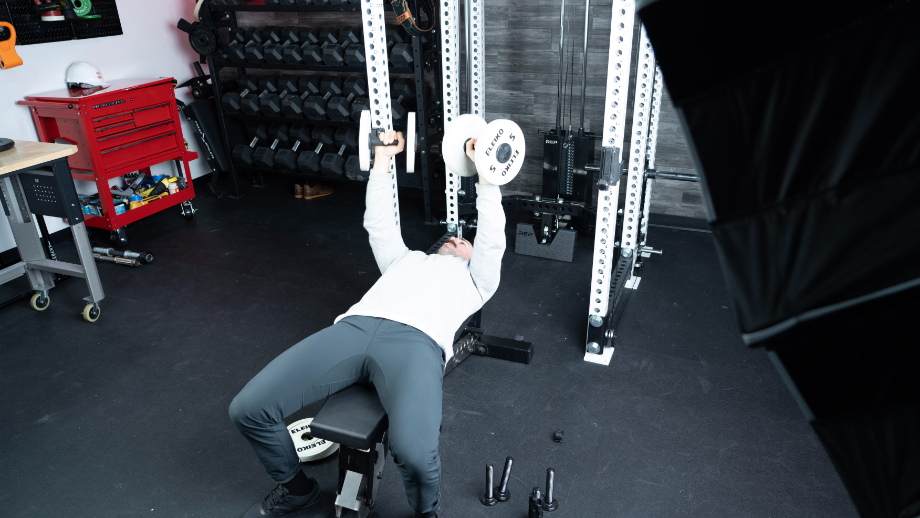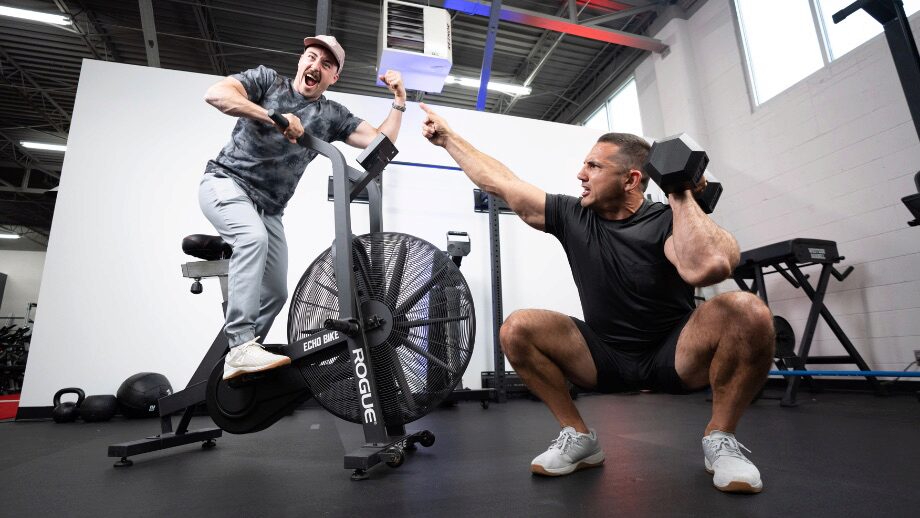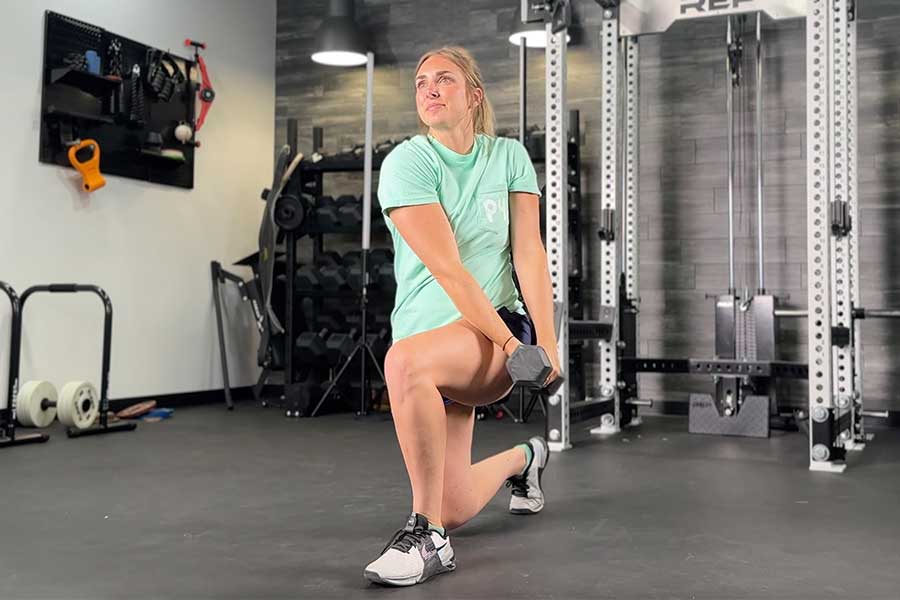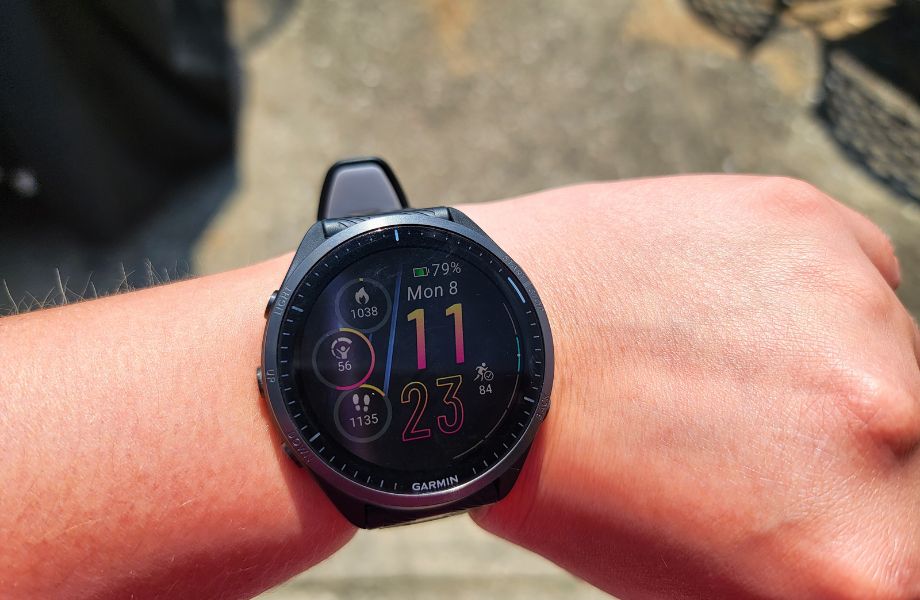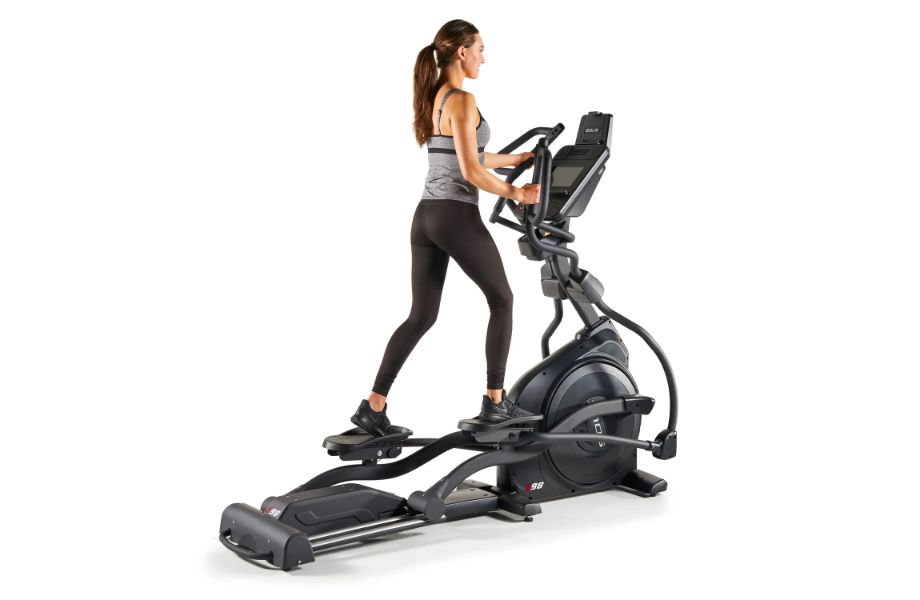The dumbbell pullover seems simple compared to the barbell variation: You hold a dumbbell above your chest muscles and head, lower it behind your head, and pull it back over to the chest. The dumbbell pullover is excellent for working muscle groups like the pectoralis major, lats, and core muscles.
But here’s the thing: Some lifters can overextend their lower back in an effort for more range of motion or extra reps. This may put some people at higher risk for injury and lead to a decrease in the benefits associated with this excellent strength movement. Here we’ll dive into how to do the dumbbell pullover with proper form, form tips from a certified personal trainer, and some common mistakes to watch out for.
Ready to pullover for gains? Then let’s go.
How To Do The Dumbbell Pullover
Here is how to perform the dumbbell pullover with excellent technique to get the best muscle growth out of this exercise.
- The setup is similar to the hip thrust. Place your upper back/shoulder blades lengthwise on a flat bench and get tight in your glutes and core.
- Ensure your knees are at a 90-degree position, and hold the dumbbell underneath, with both hands above your head.
- Keep a parallel line from shoulders to knees, a soft bend in your elbows, and lower upper arms behind your head while keeping your elbows pointed forward.
- Lower to your preferred depth while maintaining a good body position.
- Pullover back to the starting position and reset and repeat for desired repetitions.
RELATED: What Muscles Do Pull-Ups Work?
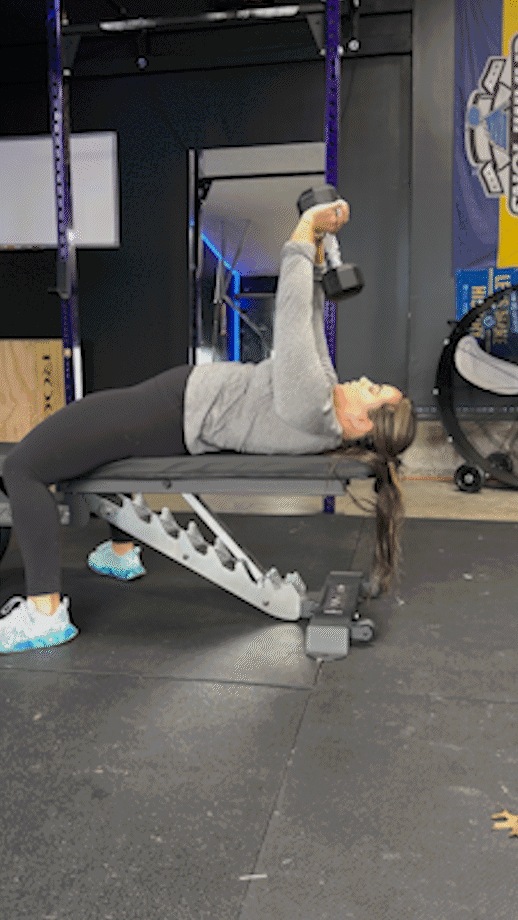
Trainer Tips for Form
The devil is in the details regarding setting up and performing the dumbbell pullover. The following are form tips to pay attention to when doing this excellent, old-school bodybuilding and weightlifting accessory exercise.
Bench Set-Up
There are a few ways to set up the standard dumbbell pullover, and none are “wrong,” per se. You can perform this on the floor (more on this later) or lying vertically on a weight bench. But when you set up similar to a hip thrust, you’re more likely to lock your lower body in a better position to do the movement with good form.
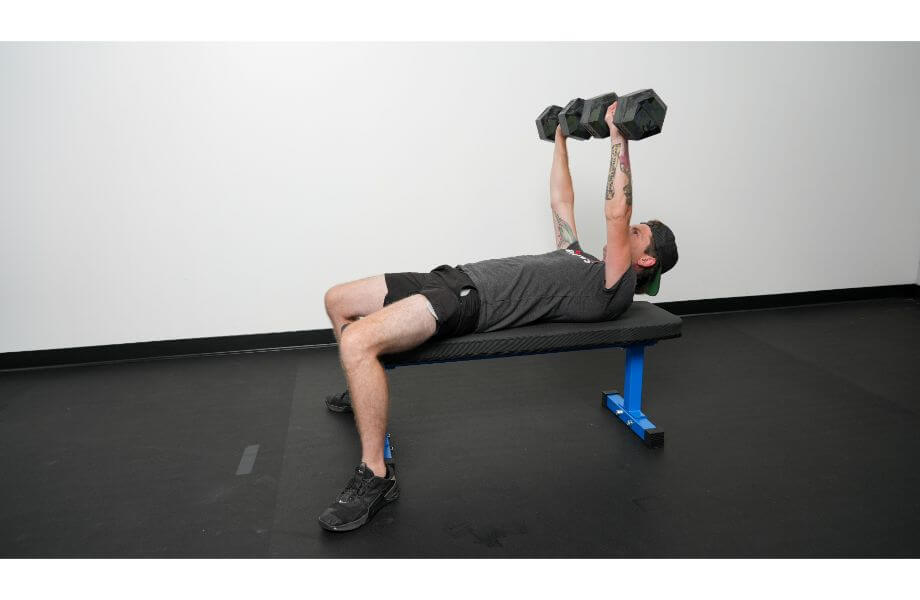
Get Tight
Having your knees at a 90-degree angle and engaging your glutes and anterior core does a few things. It keeps the lower back neutral and the ribcage down, and you are more aware that you are getting the range of motion from your upper body and not your lower back and ribcage.
It’s All About The Elbows
Keeping the elbows extended with a slight bend and pointed forward the entire time ensures the movement doesn’t turn into a triceps extension. Plus, this keeps the focus on the chest and lats and less on the shoulders. Strive to keep a straight arm, knowing there may be some slight bend, and that is OK, as long as the movement comes from the shoulder joint, not the flexion at the elbows.
Pay Attention To The Lower Back And Ribcage
Keeping the glutes tight and core engaged ensures you’re doing this movement correctly and keeps you safe while building your lats and chest.
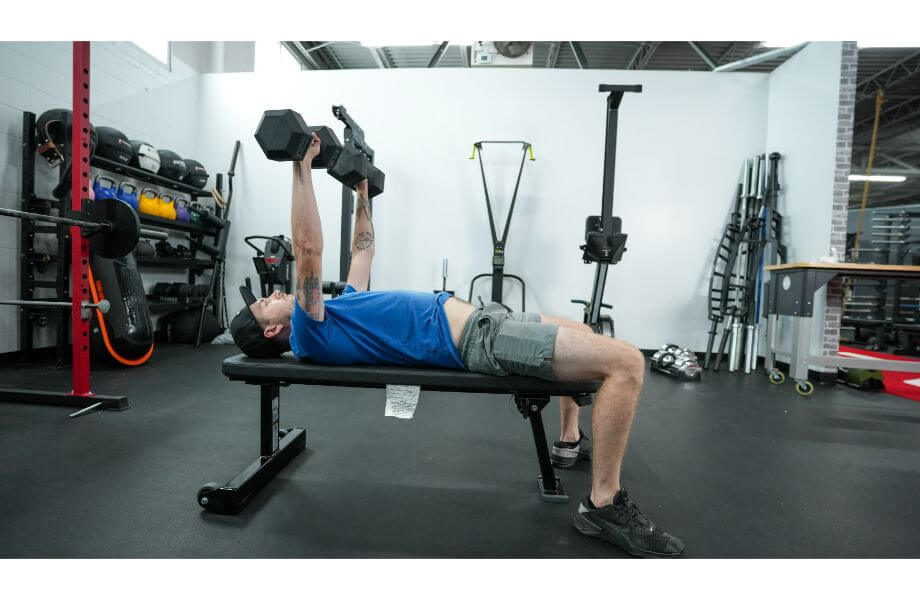
Common Dumbbell Pullover Mistakes
The dumbbell pullover is a simple exercise, but it’s also simple to make mistakes because it seems there is not much to it. Here are a few pullover mistakes to watch out for.
Don’t Force The Range Of Motion
If you have overhead shoulder mobility shortfalls, try a variation like the ones outlined below to improve your shoulder mobility. For others, forcing an extra range of motion can result in a loss of lower back and ribcage positioning, and all core strengthening benefits disappear. If you feel you’re forcing it, discontinue the set.
Bending The Elbows Too Much
Bending the elbows during the lowering phase puts the focus on the triceps and deltoids and less on the lats. There are great exercises for the entire triceps, but the dumbbell pullover is not one of them. Keep your elbows relatively straight during the whole set.
Think Quality, Not Quantity
This could be true of most exercises, but especially with the dumbbell pullover. Establishing a good mind-muscle connection with the lats, pectorals, and core ensures you’ll get the best out of this movement. There is nothing wrong with pushing it, but don’t do it at the expense of feeling the targeted muscles working.
Losing Tension In The Core & Glutes
As previously mentioned, proper activation in the core and glutes prevents excessive lower back arching and protruding ribcage. Stop, take a moment to engage the core, and glute at the beginning of every repetition.
RELATED: Best Dumbbell Exercises
Dumbbell Pullover Variations
Performing variations of the same exercise keeps things fresh and prevents boredom and overuse injuries. Here are a few pullover exercise variations to keep things spicy.
Pullover Deadbug

This pullover variation is performed with a kettlebell but can be done with a dumbbell, too. The pullover deadbug sacrifices load but reduces range of motion on the shoulder joint for those with mobility limitations and increase the demand on your anterior core and hips.
Dumbbell Pullover on a Stability Ball

In this pullover variation, you will use less load than the standard variation while still training the primary muscles of the pullover. But the stability ball makes you more aware of your glute and ribcage position. Anything less than good form (because of the stabilization demands), you and the floor may become one.
Unilateral Pullover
All three of the variations mentioned here can be performed with one arm. Doing the pullover unilaterally, you’ll be able to reduce muscle and strength and muscle imbalances between arms and double the fun for your glutes and core because you’ll have to maintain position longer.
FAQs: Dumbbell Pullover
What muscles does a dumbbell pullover work?
Is it a chest exercise, or is it a back exercise? The better question is, what muscle doesn’t the pullover train? When done with good form and through a full range of motion, the dumbbell pullover strengthens the serratus anterior, latissimus dorsi, pecs, anterior core, glutes, and the long head of the triceps.
Are dumbbell pullovers effective?
Dumbbell pullovers are effective for most strength training programs. When you do them as part of your accessory routine after your big strength movement, like the bench press, dumbbell pullovers add muscle to your chest and back muscles while strengthening your core and glutes isometrically. Plus, seeing the pullover isn’t overly complicated; it is an excellent exercise for beginners.
What is the benefit of pullover?
The dumbbell pullover has a few benefits, including improving core stability and overhead shoulder mobility because of the stretch it provides for the lat muscles. But by far, the most significant benefit is its ability to add muscle (hypertrophy if you want to get fancy) and upper body strength. Seven-time Olympia champion Arnold Schwarzenegger, who used this exercise, cannot be wrong.


